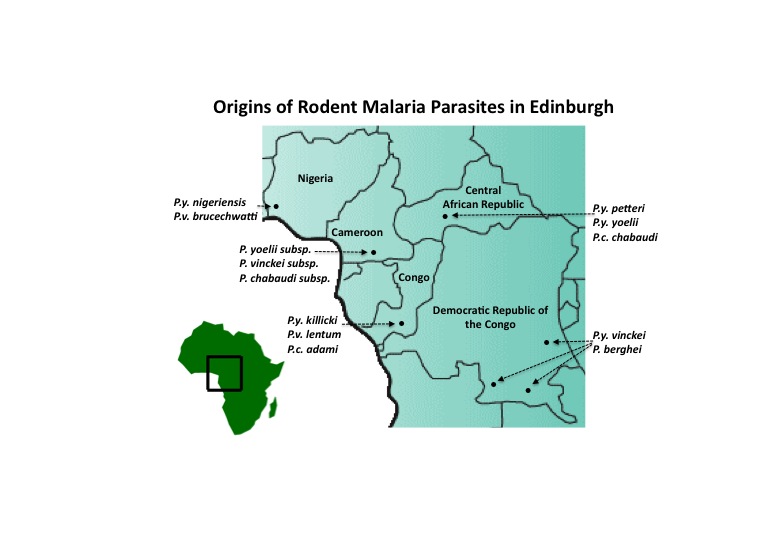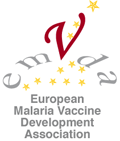Rodent malaria parasites
All rodent malaria parasites used today derive from infected mosquitoes or isolates of blood collected from wild-caught thicket rats in Cameroon, Central African Republic, Congo, Democratic Republic of the Congo and Nigeria between 1948 and 1974.

The Edinburgh rodent malaria parasite collection was established in 1969/70 with the arrival of over seventy, naturally-infected thicket rats (Thamnomys rutilans) caught in the Central African Republic by Dr Yves Boulard, working with Professors Irène Landau and Alain Chabaud. David Walliker and Richard Carter prepared stabilates either directly from the thicket rats showing patent infections or after inoculation of infected blood into mice or thicket rats (see P.c. chabaudi AS isolate record, 1969) and, over the following years, received and curated numerous further isolates and original strains from other groups.

From these isolates, more than a hundred genetically-distinct lines, spanning 4 different species (P. berghei, P. chabaudi, P. vinckei, P. yoelii) have been cloned and characterized, with many more uncloned lines awaiting examination. With the addition of distinct strains arising from genetic crosses, selection for resistance to several drugs and virulence phenotypes, and genetic transformation, the Edinburgh rodent malaria repository has grown to become the largest collection of rodent malaria parasite strains available. Over the next four years, we aim to make viable stabilates and DNA prepared from these parasite isolates and lines available through the European Malaria Reagent Repository. We especially welcome enquiries and comments from the community on any aspect of this project.
Please contact joanne.thompson@ed.ac.uk for further information on lines, clones and isolates



